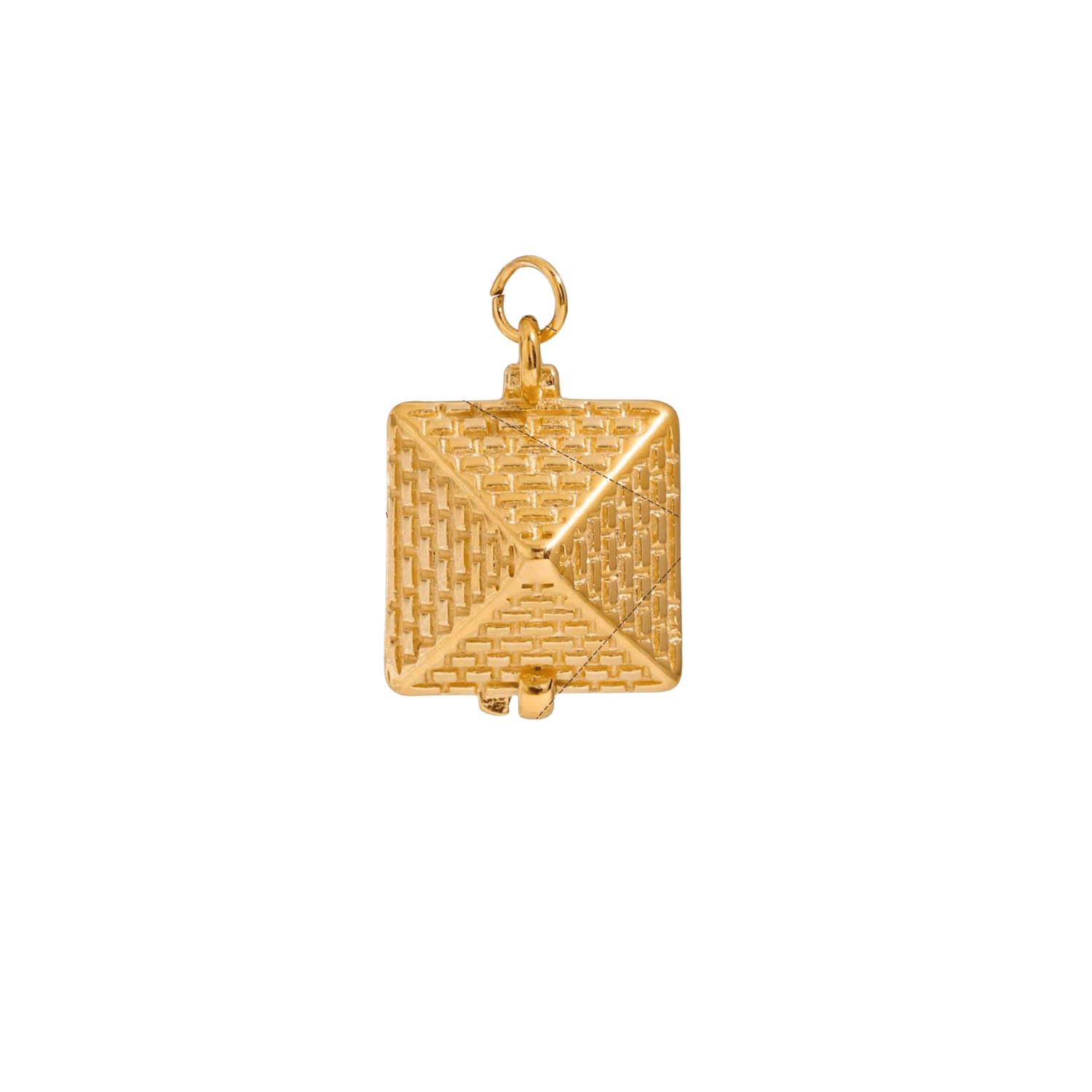
Trends in Daily Jewelry Favor Versatile and Practical Designs
Share
Quick Listen:
Imagine you're dashing out the door, a steaming coffee in one hand, a bag slung over your shoulder, and a mental to-do list a mile long. In that fleeting moment, you reach for a sleek gold chain necklace and simple stud earrings pieces that feel like second skin, never irritating, never fading, and just as refined at dusk as they were at dawn. This is the essence of jewelry in 2025: practical yet sophisticated, versatile yet timeless, crafted to match the pace of modern life while elevating every moment.
Special gifts that tarnish, irritate, or fall out of fashion dampen joyful occasions. That disappointment clouds memories meant to endure. Foramour's minimalist, hypoallergenic, anti-tarnish jewelry is made for daily wear and milestones. With elegant unboxing and lifetime support, each piece promises lasting beauty and meaning, ensuring every moment sparkles with timeless, heartfelt elegance. Shop Now!
Versatility and Practicality Redefine Daily Jewelry Trends
Jewelry has long been a symbol of beauty, but today's wearers demand more than just aesthetics. They seek pieces that deliver on comfort, durability, and adaptability, seamlessly fitting into hectic schedules. The global jewelry market, valued at USD 232.94 billion in 2024, is on track to reach USD 343.90 billion by 2032, growing at a CAGR of 5.10% . This growth isn't driven by flash alone; it's fueled by a rising preference for jewelry that integrates effortlessly into daily life think hypoallergenic materials that soothe sensitive skin, anti-tarnish finishes that endure daily wear, and designs that shift from workday to weekend with ease.
This evolution signals a broader shift toward practical luxury, where consumers prioritize pieces that reflect their values: sustainability, wellness, and individuality. The Asia Pacific region, holding a commanding 39.28% market share in 2024, is at the forefront, driven by a growing appetite for accessories that balance opulence with functionality . From stackable rings that pair as effortlessly with denim as with evening wear to necklaces that double as thoughtful gifts, versatility is the new benchmark for jewelry that resonates.
The market's expansion is also tied to rising purchasing power, particularly in emerging economies. As disposable incomes grow, consumers are investing in fine jewelry not just for status but for meaning pieces that enhance their style while aligning with their lifestyle. The fine jewelry market is expected to grow significantly, driven by increasing consumer interest in luxurious and personalized accessories .
Minimalism and Multifunctionality Take Center Stage
The trends shaping daily jewelry are as varied as the individuals who wear it. Minimalist designs lead the charge, offering clean lines and subtle elegance that work in any context. A single gold chain necklace, understated yet impactful, can anchor a layered ensemble or shine solo. Gold continues to reign supreme, with chains, rings, bracelets, and anklets dominating both everyday wear and special occasions like weddings . Yet aesthetics alone don't tell the story. Wearers are drawn to pieces that feel as good as they look lightweight metals, smooth contours, and coatings that resist the wear of daily life.
Layering and stacking have emerged as key styling techniques, allowing wearers to craft personalized looks with ease. A set of delicate bangles, each with a distinct texture, feels curated and unique. Brands are embracing this trend, offering mix-and-match collections that spark creativity without overwhelming. Functionality is also key: adjustable chains, reversible pendants, and modular earrings that transform from studs to drops cater to a generation that prizes adaptability. These innovations ensure jewelry keeps pace with busy lives, not dictating them.
Sustainability is a powerful driver. Eco-conscious consumers are demanding responsibly sourced materials recycled metals, lab-grown stones and hypoallergenic alloys that prioritize skin safety. This ethical shift is propelling the fine jewelry market's growth, as buyers seek pieces that are both meaningful and enduring . The surge in disposable income, especially in emerging markets, has made these pieces more accessible, but the focus remains on quality over flash jewelry that tells a story and withstands the test of time.
Even men's jewelry is gaining traction, with cufflinks, tie bars, and signet rings emerging as popular choices . This trend reflects a broader cultural shift toward inclusive, expressive accessories that transcend traditional boundaries, further fueling market growth.
Innovations in the Real World
Brands are rising to the challenge with remarkable ingenuity. Physical vapor deposition (PVD) coatings, which create durable, tarnish-resistant finishes, are becoming standard, ensuring pieces stay vibrant through daily wear. Nickel-free alloys are now a mainstay, addressing the needs of those with sensitive skin. London-based designer Loveness Lee, who launched her brand in 2017, exemplifies this innovation. Inspired by abstract painting, Lee crafts sculptural pieces from natural forms like cactus skeletons and barnacle shells, creating wearable art that's both unique and accessible. Her designs, never identical due to the organic casting process, resonate with Gen Z's craving for individuality without exorbitant costs .
Gifting is another area where practical jewelry excels. Everyday sets coordinated earrings, necklaces, and bracelets are marketed as timeless gifts for milestones like graduations, anniversaries, or promotions. These pieces are designed for daily wear, ensuring they're cherished rather than shelved. Brands are also innovating with multi-purpose designs: pendants that reveal a different gemstone when flipped or chains that adjust to various lengths, offering versatility that appeals to both givers and receivers.
These innovations don't just enhance style; they redefine jewelry's role. By prioritizing comfort and durability, brands are creating pieces that feel like an extension of the wearer, aligning with the growing emphasis on wellness and self-expression. As consumers increasingly view jewelry as a form of personal care, these designs are poised to dominate.
Navigating the Challenges of Practical Luxury
Despite the momentum, crafting practical yet luxurious jewelry comes with challenges. Balancing affordability with quality is a persistent struggle. High-end brands like Cartier and Van Cleef & Arpels set the bar for craftsmanship, but their steep prices often thousands exclude many buyers . Consumers want that same sophistication at a fraction of the cost, pushing brands to innovate with cost-effective materials that maintain durability and elegance. Fast fashion jewelry, with its low prices and trend-driven designs, poses stiff competition, even if it often lacks longevity.
Perception is another hurdle. Practical features like hypoallergenic alloys or anti-tarnish coatings don't always scream “luxury,” and brands must work to bridge this gap through clever marketing. The cost of innovation developing new materials or technologies can also inflate prices, risking alienation of budget-conscious shoppers. Yet these challenges are sparking creativity, as brands find ways to make functional jewelry feel aspirational, blending practicality with the allure of high-end design.
Seizing Opportunities for Growth
The opportunities in this evolving market are immense. The demand for sensitive-skin-friendly jewelry creates a niche for brands to differentiate themselves with premium, hypoallergenic offerings. Corporate gifting is an untapped frontier, with versatile jewelry sets emerging as ideal rewards for employees or clients. Subscription models, delivering seasonal updates of everyday essentials, are gaining ground, aligning with the trend toward curated, effortless style.
Most compelling is jewelry's alignment with broader lifestyle trends. Pieces that prioritize comfort and skin safety aren't mere accessories; they're part of a movement toward intentional living and self-care. As consumers increasingly see jewelry as an extension of their identity, brands that marry practicality with personal expression will lead the market. This synergy positions jewelry not just as adornment but as a vital component of modern wellness.
A Lasting Impression
In 2025, jewelry is no longer just about turning heads it's about keeping up with lives in motion. From hypoallergenic necklaces that shine through long days to stackable rings that carry personal meaning, the future of jewelry is as functional as it is beautiful. Stylists forecast a year of bold yet wearable trends, where luxury meets livability . The next time you slip on a favorite bracelet or fasten a go-to necklace, remember: the best jewelry doesn't just enhance your look it empowers your day, blending elegance with the ease of everyday life.
Frequently Asked Questions
What are the biggest jewelry trends for 2025?
The biggest jewelry trends for 2025 focus on minimalist designs that offer versatility and practicality for daily wear. Key trends include layering and stacking techniques with pieces like delicate gold chain necklaces, stackable rings, and mix-and-match collections. These designs prioritize comfort, durability, and hypoallergenic materials that can seamlessly transition from workday to weekend wear.
How is the fine jewelry market expected to grow in the coming years?
The global jewelry market is projected to grow significantly, from USD 232.94 billion in 2024 to USD 343.90 billion by 2032, with a CAGR of 5.10%. The fine jewelry segment specifically is expected to reach USD 87.2 billion by 2031, driven by rising disposable incomes in emerging markets and increased demand for sustainable, versatile pieces that align with consumer's values of quality over flashiness.
Why is practical jewelry becoming more popular than statement pieces?
Practical jewelry is gaining popularity because modern consumers demand pieces that match their fast-paced lifestyles while delivering comfort and durability. Today's wearers seek jewelry with hypoallergenic materials, anti-tarnish finishes, and multifunctional designs that feel like "second skin" throughout busy days. This shift toward practical luxury reflects broader lifestyle trends emphasizing wellness, sustainability, and intentional living over flashy statement pieces.
Disclaimer: The above helpful resources content contains personal opinions and experiences. The information provided is for general knowledge and does not constitute professional advice.
You may also be interested in: Sea seeker – foramour
Special gifts that tarnish, irritate, or fall out of fashion dampen joyful occasions. That disappointment clouds memories meant to endure. Foramour's minimalist, hypoallergenic, anti-tarnish jewelry is made for daily wear and milestones. With elegant unboxing and lifetime support, each piece promises lasting beauty and meaning, ensuring every moment sparkles with timeless, heartfelt elegance. Shop Now!
Powered by flareAI.co

